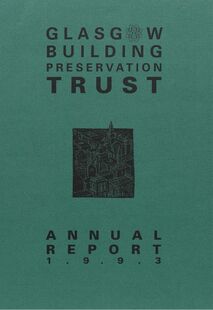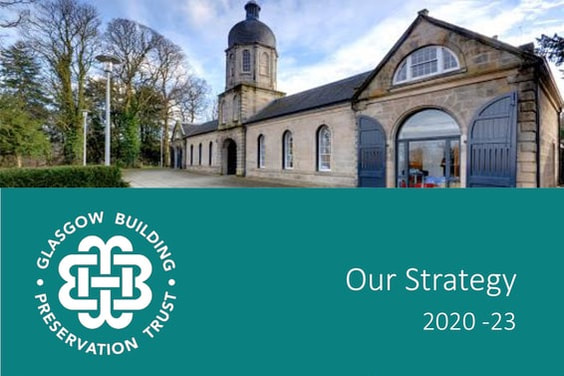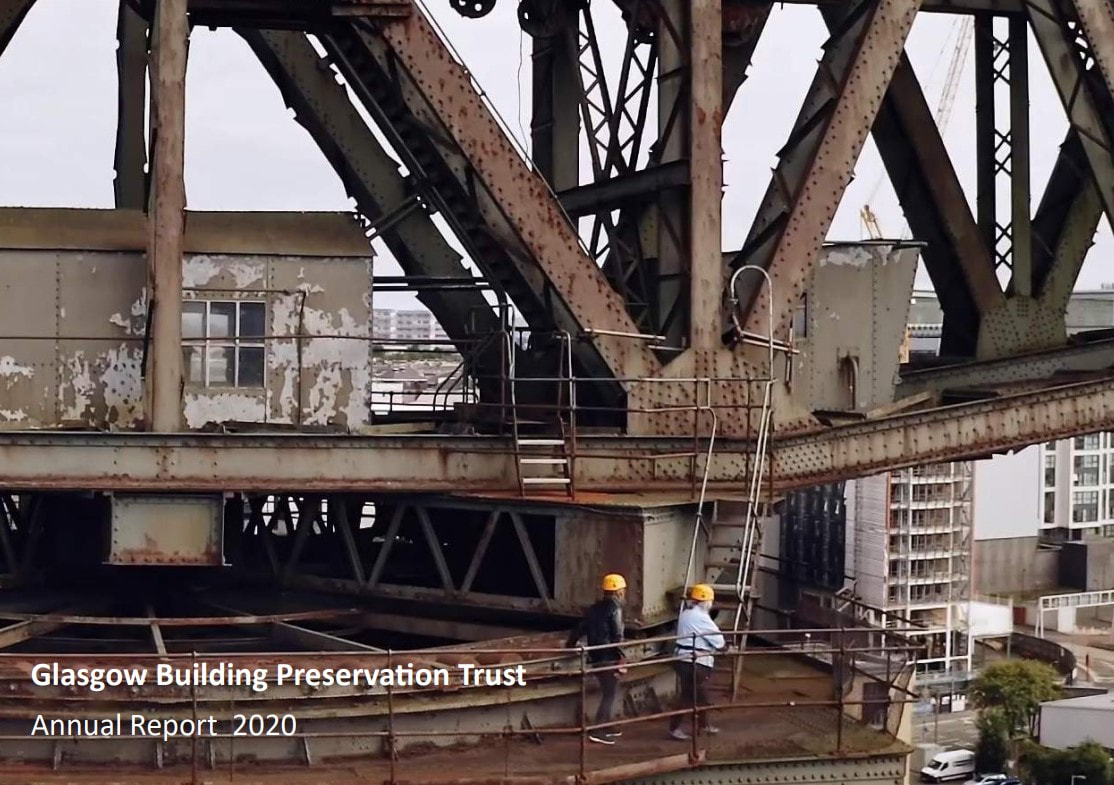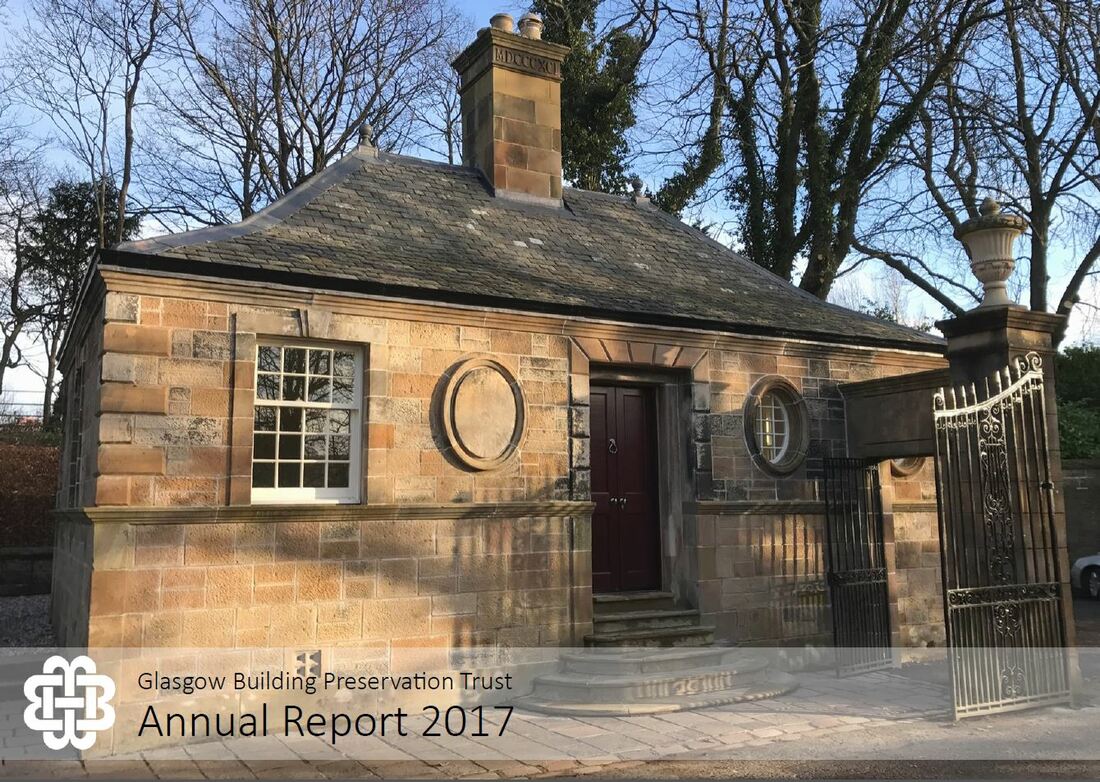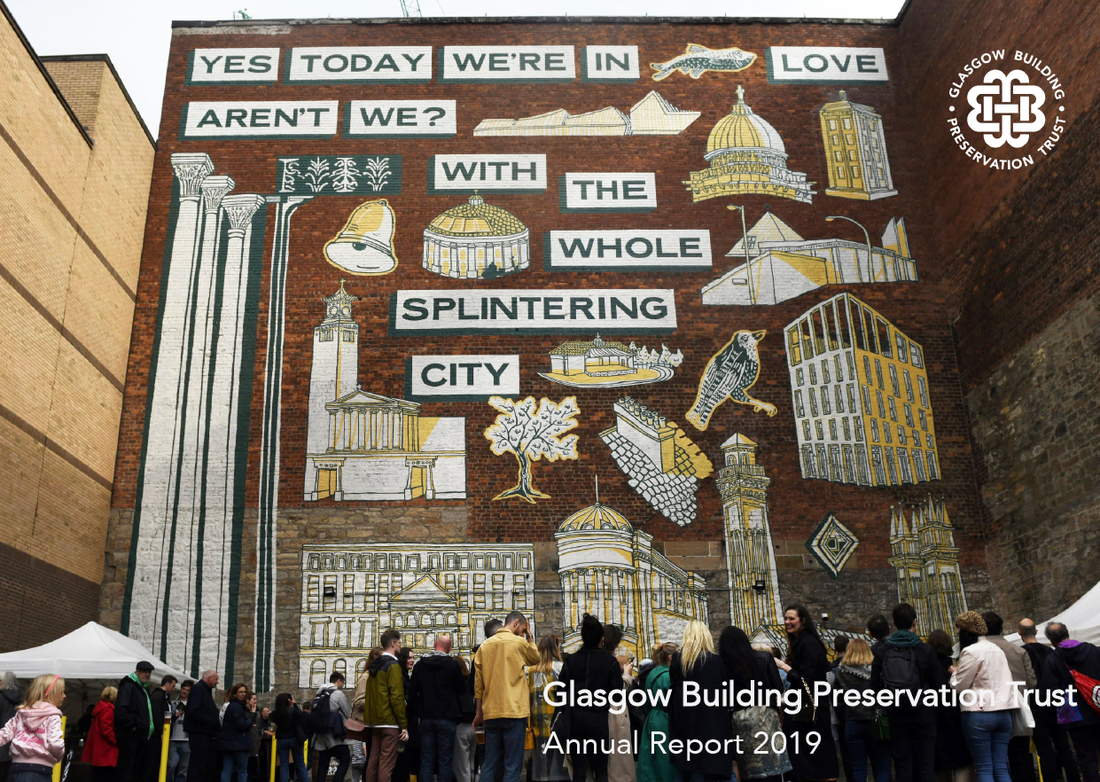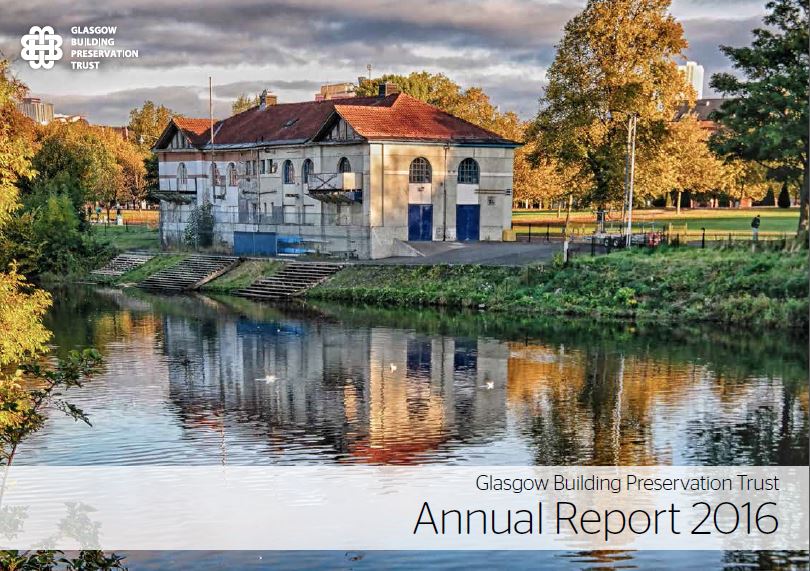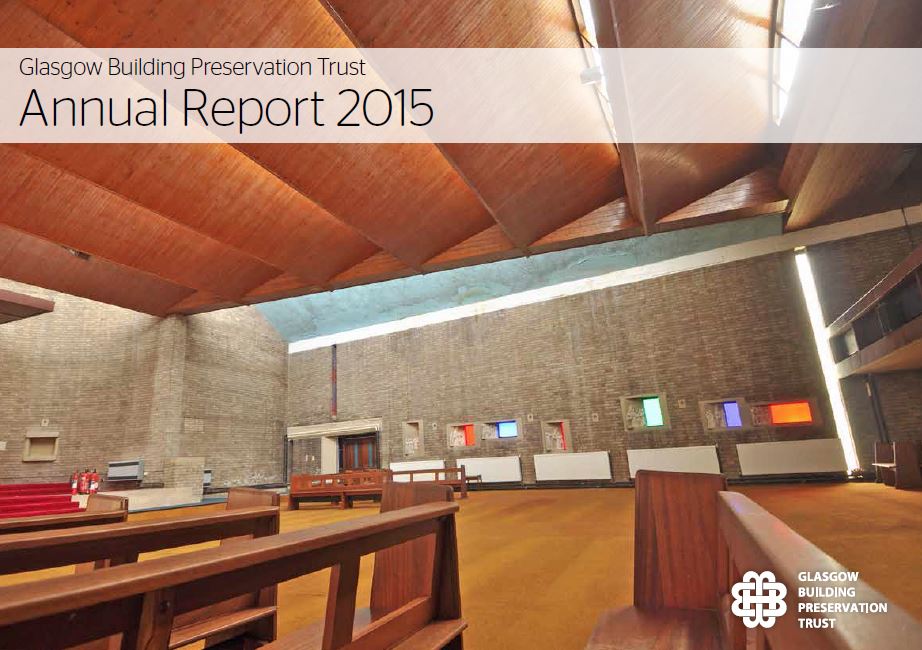About.GBPT aspires to be an exemplary Building Preservation Trust that delivers high-quality, sustainable conservation projects which contribute to the regeneration of Glasgow’s built environment.
|
Established in 1982Glasgow Building Preservation Trust (GBPT) was established in 1982 as a charitable trust to rescue, repair, restore and rehabilitate significant, historic buildings at risk across the city. The retention of our historic built environment is pivotal to our sense of place and contributes to making Glasgow a beautiful and vibrant place to live, work and visit. Without the Trust’s interventions many fine buildings and landmarks would have been lost.
In 1990, GBPT, with the Scottish Civic Trust, launched Glasgow’s first Doors Open Day, which has gone from strength to strength and is now one of the highlights of Glasgow’s events calendar. Our Mission
GBPT aspires to be an exemplary Building Preservation Trust (BPT) that delivers high-quality, sustainable conservation projects which contribute to the regeneration of Glasgow’s built environment. We are one of the largest and most productive BPTs in the UK, with 4 members of staff and multiple projects underway at any one time. Over the last 30 years we have undertaken a wide range of work to help repair, enhance and promote Glasgow’s built heritage.
|
Our Aims
Our Benefits
Often referred to as ‘developers of the last resort’, BPTs acquire, repair and find appropriate new uses for buildings which no-one else is willing or able to take on. We can access charitable and public funding unavailable to local authorities and commercial developers in order to deliver projects which drive social and economic regeneration. In particular GBPT can offer;
|
Our HistoryGBPT was formerly known as the Bridgegate Trust, established in 1982 to take on the redundant Briggait Fish Market which at the time had been threatened with demolition. This Category A-listed building described as ‘Scotland’s most important surviving market halls’ (Historic Scotland) was successfully saved, and for a period operated as a speciality shopping centre, but a long-term viable reuse was actively sought for two decades. Between 2001-09 the building was successfully converted by the Wasps Studios to the award-winning artists’ studios and cultural centre.
In 1991, the Bridgegate Trust became Glasgow Building Preservation Trust. Over the years, with the continued support of Glasgow City Council, through revenue and capital funding and the consistent support of funders such as the Heritage Lottery Fund, Historic Scotland and the Architectural Heritage Fund, our activities have expanded significantly and there is growing demand for our services. |
Our Board
The Board of GBPT comprises 7 Directors elected from the membership, 2 Directors nominated by Glasgow City Council and up to 3 co-opted Directors who all give their time voluntarily in support of the work of the Trust. Together, the Board of Trustees has a wide range of expertise across heritage, community, architecture, planning, law, governance and finance.
|
Dr Andrew Agapiou
Dr Andrew Agapiou combines academic background in Construction Law with over 25 years of industrial experience, helping clients to manage and resolve their disputes as a Certified Mediator, specializing in Property and Construction Mediation. Andrew is a Senior Lecturer in the Architecture School, University of Strathclyde, teaching both undergraduate and postgraduate students and is a director of the Architects Professional Examination Authority Scotland (APEAS). Andrew is an elected Director. |
Kate Anderson
Kate Anderson is a Chartered Surveyor with a broad range of experience across multiple sectors including offices, industrial and retail, on both a transactional and consultancy basis. Kate currently works at CBRE as a Valuer within the Glasgow team. Kate was recruited through the Arts and Business Scotland New Voices: Fresh Perspectives programme and is a co-opted Director on the Board. |
Chris Cunningham
Chris Cunningham is City Convener for Education, Skills and Early Years on Glasgow City Council where he was first elected as an SNP councillor for the Garscadden/Scotstounhill ward in October 2016 and has been a GCC nominated Director of GBPT since October 2017. Chris' professional background is in housing where he enjoyed a 35 year career with Shettleston Housing Association, starting as a Housing Officer in 1982 and becoming Director in 1989. Chris was Chair of the Scottish Federation of Housing Associations from 1995 to 1998 and was seconded to Glasgow Housing Association from June 2000 to December 2002. Chris is a nominated Director from Glasgow City Council. |
Liz Davidson OBE Hon FRIAS
Liz Davidson delivered the first Doors Open Days event and projects including St. Andrew’s Square Church, the Tobacco Merchants House and the ‘Tardis’ police boxes in her time at GBPT. Liz established and delivered the Merchant City Townscape Heritage Initiative and the Conservation Area Regeneration Scheme programme. Liz was then Head of Heritage and Design in Glasgow City Council prior to becoming Senior Project Manager for the Glasgow School of Art. Liz has previously held trustee positions with the Architectural Heritage Fund and sits on the National Lottery Heritage Fund Scotland Committee. In 2010 Liz received an OBE for services to conservation and the built heritage in Scotland. Liz is an elected Director. |
|
Eleanor McAllister OBE Hon FRIAS
Eleanor McAllister is both an economist and a town planner and has worked for over 25 years in the west of Scotland using both these disciplines in developing and implementing regeneration projects. Eleanor was previously Director of Glasgow Building Preservation Trust in the 1980s. Eleanor is currently a trustee of the Architectural Heritage Fund, where she is Chair of the Grants Panel and has previously been a Trustee of the Heritage Advisory Council for Scotland; Council member of Historic Scotland; and a member of the Scotland Committee of the National Lottery Heritage Fund. Eleanor is an elected Director. |
Scott Donohoe
Scott Donohoe is currently a Branch Officer for UNISON Glasgow City Branch; Health & Safety officer and Depute Branch Secretary, also dealing with employment law & industrial relations. Scott is the current Chairperson of our Scottish Health & Safety Committee helping to drive forward the union’s issues and campaigns at National level. Scott first joined the GBPT Board as the Scottish Trades Union Congress’ nominated director. Scott is also Trustee & Chair of a leading Health & Safety charity, Scottish Hazards and currently a Board member of the Carbeth Hutters Community Company. Scott is an elected Director. |
Kyle Thornton
Kyle Thornton is the Scottish Conservative & Unionist Councillor for Newlands/Auldburn. Elected in 2017, Kyle is the Group Spokesperson for the Environment, Workforce and Democratic Reform and also serves as the Group Business Manager. He also serves as a Bailie of the City of Glasgow representing the city in a civic capacity on behalf of the Lord Provost. Kyle is a nominated Director from Glasgow City Council. |
Charles Turner
Charles Turner is Chief Executive of Thenue Housing Association and a trustee of Cassiltoun Trust where he has experience of working alongside GBPT in the delivery of Castlemilk Stables. Charles has interest and experience in charity governance and a belief in the contribution to society made by charitable organisations. Charles’ role at Thenue HA includes strategic leadership, business development, advocacy and corporate governance. Charles is an elected Director. |
Staff Team
|
David Cook
Director |
Niall Gallacher
Project Development Officer |
Ingrid Shearer
Heritage Engagement Officer |
Stephen Sheriff
Events and Development Co-ordinator |
View our Strategic Plan
View our Annual Reports
The Building Preservation Trust (BPT) Movement
BPTs are charitable organisations established to rescue historic buildings at risk by repairing and converting them for viable new uses. They usually take on market failure buildings, where the cost of repair exceeds their restored value or where the future of a building is uncertain. BPTs are part of a much wider movement established in response to the destruction and neglect of the historic built environment. The earliest BPT established in the UK was the Cambridge Preservation Society formed in 1929.
In Scotland, the National Trust for Scotland (established in 1931) launched the Little Houses Improvement Scheme in 1960 which buys neglected or dilapidated historic properties then restores and sells them for the purpose of regeneration. This pioneering scheme is widely recognised as the main inspiration for other subsequent building preservation initiatives across the UK. One organisation pivotal in the growth of the BPT movement is the Architectural Heritage Fund (AHF) established in 1976 as an independent charity to provide readily available working capital to local preservation trusts throughout the country in order to help save historic buildings.
SAVE Britain’s Heritage has also been influential to the movement since its creation in 1975 – European Architectural Heritage Year – through its public campaigns to raise awareness of endangered historic buildings, with a special emphasis on the possibilities of alternative uses for such buildings.
The BPT movement grew significantly in the 1970s and 80s and there are now almost 300 BPTs in the UK whose common aims include the preservation and regeneration of historic buildings for the benefit of the public. Most belong to the Heritage Trust Network the membership and representative organisation for BPTs. The Scottish BPT movement is well established with the second half of the 1980s in particular being a very dynamic period when many individual trusts were set up. A few BPTS operate across the whole of Scotland, several at regional or sub-regional level with the majority of trusts delivering results at the local level.
Since 1984, over 110 buildings have been successfully restored and 43 have been removed from the Scottish Buildings at Risk Register. The majority of BPTs are run by volunteers but some trusts in Scotland have members of staff, including GBPT.
BPTs are charitable organisations established to rescue historic buildings at risk by repairing and converting them for viable new uses. They usually take on market failure buildings, where the cost of repair exceeds their restored value or where the future of a building is uncertain. BPTs are part of a much wider movement established in response to the destruction and neglect of the historic built environment. The earliest BPT established in the UK was the Cambridge Preservation Society formed in 1929.
In Scotland, the National Trust for Scotland (established in 1931) launched the Little Houses Improvement Scheme in 1960 which buys neglected or dilapidated historic properties then restores and sells them for the purpose of regeneration. This pioneering scheme is widely recognised as the main inspiration for other subsequent building preservation initiatives across the UK. One organisation pivotal in the growth of the BPT movement is the Architectural Heritage Fund (AHF) established in 1976 as an independent charity to provide readily available working capital to local preservation trusts throughout the country in order to help save historic buildings.
SAVE Britain’s Heritage has also been influential to the movement since its creation in 1975 – European Architectural Heritage Year – through its public campaigns to raise awareness of endangered historic buildings, with a special emphasis on the possibilities of alternative uses for such buildings.
The BPT movement grew significantly in the 1970s and 80s and there are now almost 300 BPTs in the UK whose common aims include the preservation and regeneration of historic buildings for the benefit of the public. Most belong to the Heritage Trust Network the membership and representative organisation for BPTs. The Scottish BPT movement is well established with the second half of the 1980s in particular being a very dynamic period when many individual trusts were set up. A few BPTS operate across the whole of Scotland, several at regional or sub-regional level with the majority of trusts delivering results at the local level.
Since 1984, over 110 buildings have been successfully restored and 43 have been removed from the Scottish Buildings at Risk Register. The majority of BPTs are run by volunteers but some trusts in Scotland have members of staff, including GBPT.

